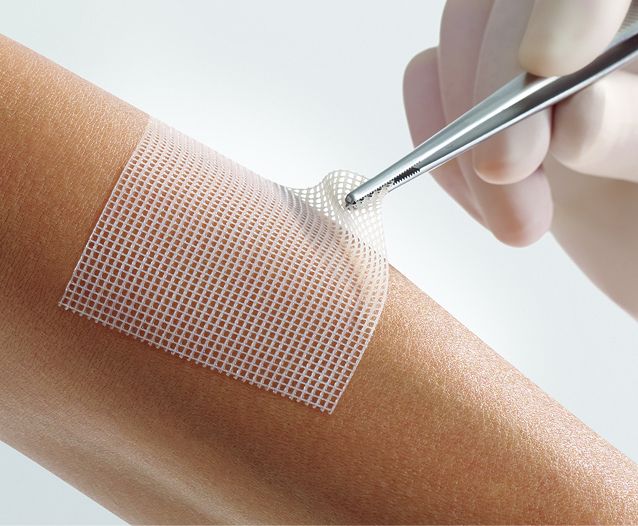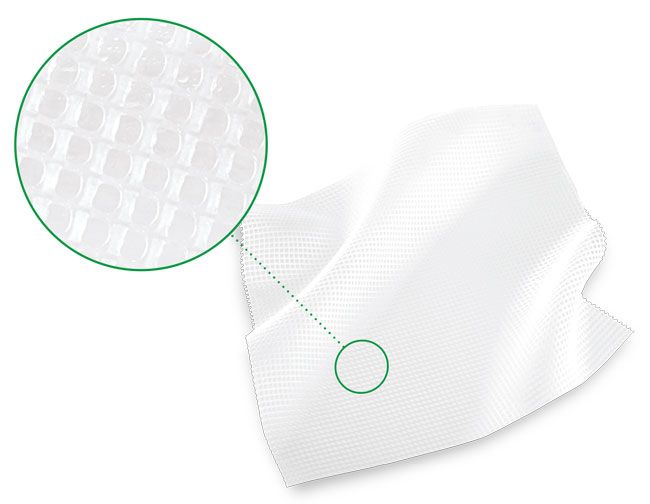Lomatuell® Pro
Gel-forming contact net
Lomatuell Pro is a non-adhesive, flexible wound dressing with an open net structure and good exudate drainage into the secondary dressing (wound contact layer).
The product consists of a synthetic tulle saturated with a polymer matrix that contains lipids and hydrocolloids. On contact with fluids, the hydrocolloid particles form a gel, which forms an amphiphilic (hydrophilic-lipophilic) layer with the petroleum jelly.
Adherence to the wound is largely prevented, wound healing is supported and atraumatic dressing changes are facilitated. Lomatuell Pro can be used in combination with negative pressure therapy (superficial wounds) as a separating layer* and it can be used in all exudation phases. The product can be used on both sides and can be cut to size for different wound sizes and areas of the body.
*based on in-vitro studies
Dressing change interval
The recommended dressing change interval is normally 2–4 days. Depending on the type of wound and its healing progress, the dressing can be left on the wound for a shorter or longer period (up to a maximum of 7 days).
Product composition
polyester tulle impregnated with a coating compound, made from a polymer matrix (an elastic malleable fixing compound), Vaseline and hydrocolloidFields of application
- Wound healing stages
- Exudation phase
- Granulation phase
- Epithelialisation phase
- Chronic wounds
- lower leg ulcers
- diabetic foot ulcers,
- pressure ulcers
- Acute wounds
- lacerations, cuts and abrasions
- second-degree burns
- Post-surgical wounds
- surgical wounds healing by secondary intention
- skin graft donor sites
- can be used in combination with negative pressure therapy as a separating layer*)
*) based on in vitro tests
*) based on in vitro tests
Properties
- atraumatic and low-pain dressing changes
- can be used on both sides
- support for the wound healing process
- risk of adhesion to the wound is minimised
- good exudate drainage into the secondary dressing



